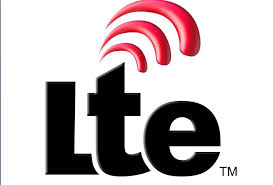
We spoke to Bill Goers, head of the wireless demonstration team at Alcatel-Lucent, which supplied the platform for the Verizon Wireless LTE Broadcast trial at the recent US Super Bowl.
Following its successful demonstration of LTE Broadcast at the recent US Super Bowl, Verizon Wireless is now engaged in the final run in towards the world’s first commercial launch of a service based on eMBMS (Evolved Multimedia Broadcast Multicast Service) technology in the third quarter of this year. Verizon Wireless’ director of mobile video delivery Parissa Pandkhou indicated that this would happen after the relevant network infrastructure upgrades had been performed by the middle of the year. This includes upgrading the MME (Mobility Management Entity) in the base station to enable broadcast over the radio access network (RAN) and also deploying the BM-SC (Broadcast Multicast Service Center) for session and transmission control along with security and content synchronization. The eMBMS Gateway also has to be installed to enable IP multicast distribution across the operator’s core and backhaul network. LTE Broadcast is multicast out as far as the RAN, allowing operators to select which cells receive the streamed video content. Verizon Wireless has selected both Alcatel-Lucent and Ericsson as co-suppliers of this LTE Broadcast platform.
The handsets also need to be upgraded and so Pandkhou pointed out that at the same time Verizon Wireless was working with manufacturers to ensure there would be a reasonable number of LTE Broadcast capable smartphones and tablets by the time of the launch. For the Super Bowl demo, which we first reviewed as it was happening in the fourth blog in this series, Verizon Wireless used two handsets that are already LTE Broadcast capable. One was Verizon’s own branded tablet running an LTE module provided by Paris based 4G chipset maker Sequans and the other the commercially available Samsung Galaxy Note 3 5.7 inch smartphone with an LTE chipset from Qualcomm.
The Super Bowl was not a field test but featured demonstrations from a booth in the ground through which 7000 people passed during the event. The objective was not to assess the technology, which had already been proven, but to play around with use cases and obtain public feedback that would help determine the shape of the service on the launch.
Indeed the platform is now ready to go and Verizon Wireless could launch the service very quickly, according to Alcatel-Lucent’s head of wireless demonstration Bill Goers. But first Verizon wants to work out how best to charge for it. While the Super Bowl demo could not directly answer that question it did provide a lot of valuable feedback about the sort of features that would interest users and therefore at the very least make a mobile service stickier. The key point was that LTE Broadcast enables a sporting event to replicate many of the video features people get at home on their TVs, by effectively turning their handsets into mobile PVRs (Personal Video Recorders). These include commentaries, instant replays, game statistics and interviews with players.
Some of these were provided during the Super Bowl demo, with the additional ingredient of support for user generated content. There is the potential to enable uploading of video from spectators at an event, which could be a concert as well as a sporting contest, for example to provide different camera angles and perspectives beyond those captured by professional camera crews. As Goers noted this would require some moderating function but has the potential to add value by generating novel video streams that can be watched while the event is still going on, or even near live. Such content can be made available as a progressive download so that users can start watching immediately while also having it available for subsequent viewing. In this way LTE Broadcast can deliver a video experience that is in some respects superior to the one available at home.
This ability of LTE Broadcast to at least match the home viewing experience is also appealing to leagues and sports organizers, the US NFL (National Football League) in the case of Super Bowl. The NFL still derives 40% of its income from paying spectators at the gate and yet numbers have been declining because the ever improving experience of watching on TV has made some people question whether it is worth paying up to $100 or more to attend the games, often in the cold and with a poorer view of the action than they are getting at home. The NFL is very interested in the potential of LTE Broadcast to attract more people to games, which itself suggests one avenue to monetization. The LTE operator could take a proportion of gate money over and above a target amount.
What seems unlikely is that users will be charged extra for LTE Broadcast at these events, given that the objective is to enhance the experience of attending without imposing yet another tariff on top of the gate fee. There is though the great potential for location based advertising and information services not just at sporting events or concerts but also at other venues where large numbers of people congregate on a more continuous basis, such as airports, shopping malls and college campuses. All bets are on during these early days for LTE Broadcast but there is a strong and mounting conviction that revenue opportunities will be there for the taking.
Companies that we have mentioned in the series include Alcatel Lucent, Birdstep Technology, Ericsson, Qualcomm, Sequans, and the operators that have been the most open about their efforts are Verizon and Telstra.
This concludes our 5 part series on LTE Broadcast, which started here.

